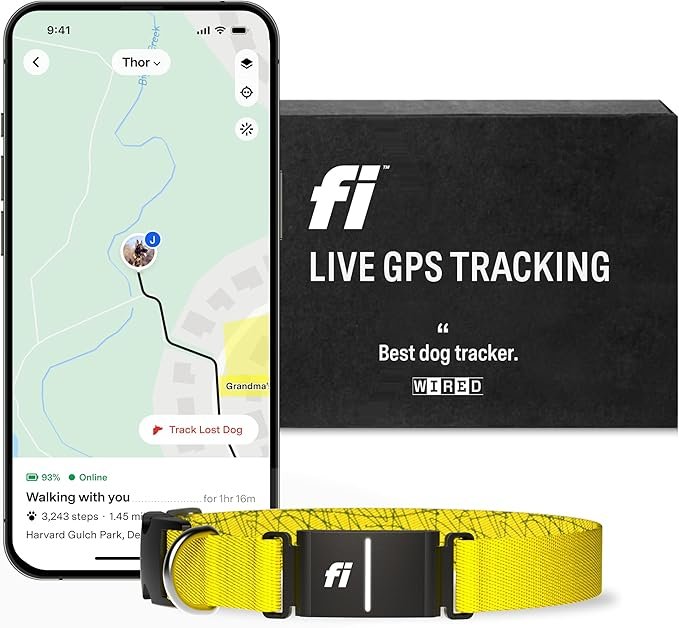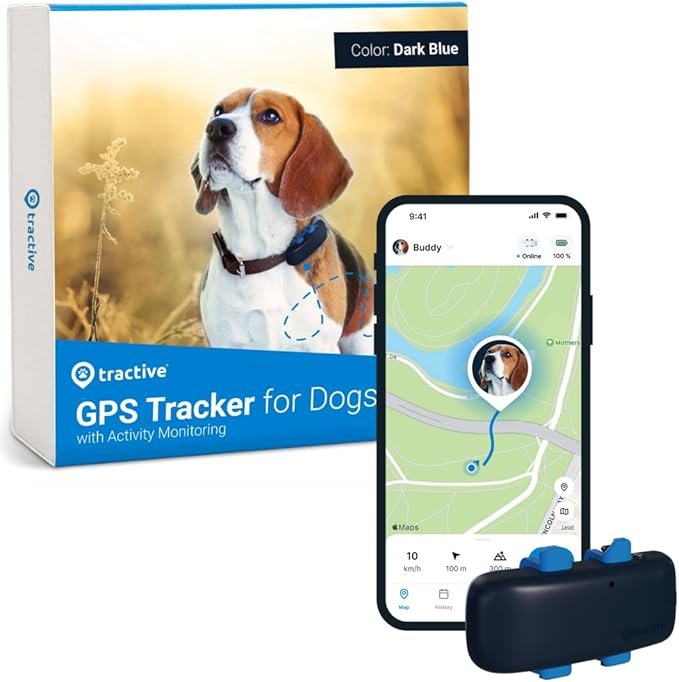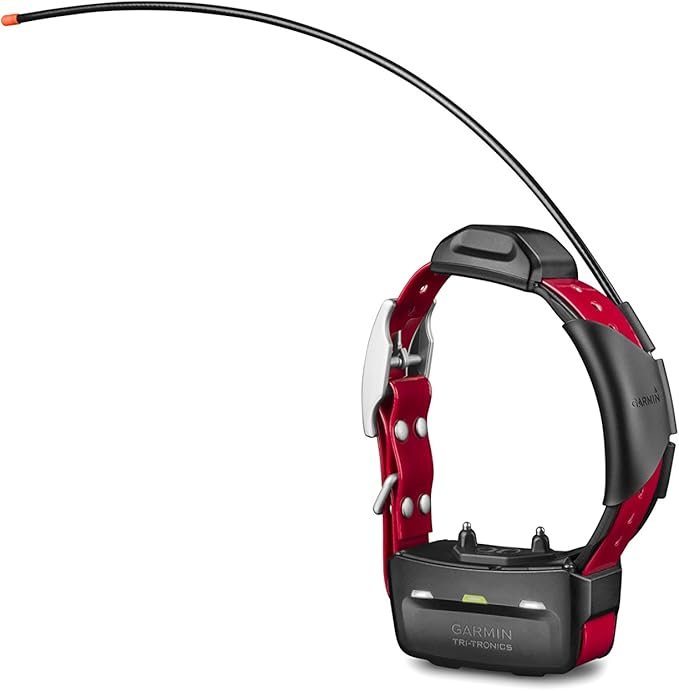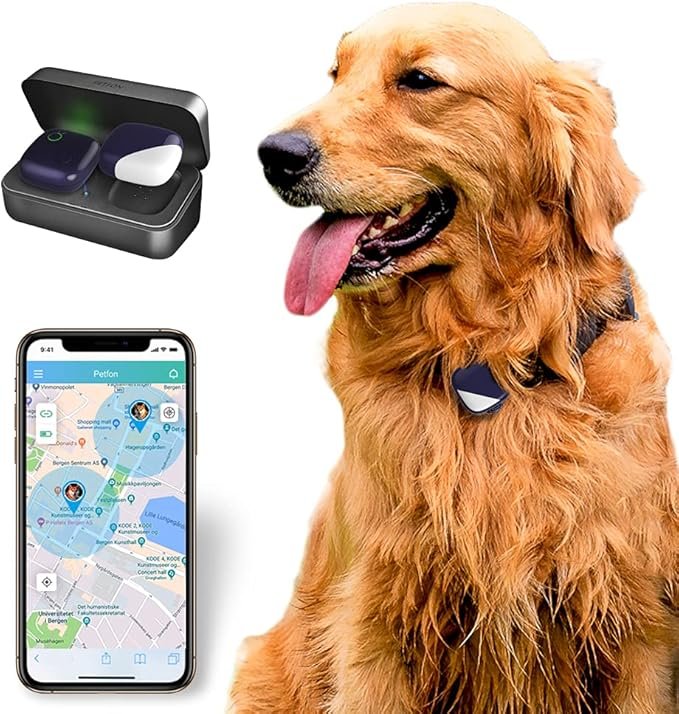We all want our furry friends to stay safe, but life can be unpredictable. One moment your dog is in your backyard, and the next, they’ve wandered off. That’s where dog collar trackers come in—a handy tool that helps you keep tabs on your pet, no matter where they are. With advanced features like GPS tracking, activity monitoring, and even health insights, these devices are becoming must-haves for pet owners. So, let’s dive into the world of dog collar trackers to find out what makes them essential and which ones are the best for your pup.
How Dog Collar Trackers Work
GPS Tracking Technology
At the heart of most dog collar trackers is GPS technology. This allows you to pinpoint your pet’s exact location in real-time. Whether they’ve wandered to a neighbor’s yard or dashed into the woods during a walk, GPS trackers offer peace of mind by showing you precisely where your furry friend is. They work by connecting to satellites, making them suitable for long-distance tracking.
Bluetooth Connectivity
For closer-range tracking, some devices rely on Bluetooth technology. While their range is limited compared to GPS, Bluetooth trackers are perfect for indoor settings or finding your dog when they’re nearby. Plus, they’re often more affordable and consume less battery.
Features to Look for in a Dog Collar Tracker
Range of the Tracker
When choosing a tracker, it’s essential to consider how far it can track. GPS trackers are ideal for covering larger areas, making them perfect for adventurous dogs. Bluetooth trackers, on the other hand, are better for shorter distances.
Battery Life
What good is a tracker if its battery dies when you need it most? Look for options with extended battery life—some devices can last up to weeks on a single charge. This is especially important for dogs who love exploring for hours on end.
Waterproof and Durability
Dogs will be dogs, and that means they’ll get wet, muddy, or run through rough terrain. A waterproof and durable tracker is a must for ensuring it can handle your pet’s adventurous spirit. Many top trackers are designed to withstand rain, puddles, and even swimming.
Top Benefits of Using Dog Collar Trackers
Peace of Mind for Pet Owners
One of the biggest advantages of using a dog collar tracker is peace of mind. Knowing you can locate your pet in seconds is priceless. Many pet owners have shared stories of how these devices helped them reunite with their lost pets.
Tracking Behavioral Patterns
Beyond just locating your pet, many trackers also monitor their activity levels. You can track how much exercise your dog is getting, ensuring they stay healthy and active. Some devices even offer insights into sleep patterns, helping you identify potential health issues.
Top Dog Collar Trackers of 2025
Fi Smart Collar

Image by [Amazon]
The Fi Smart Collar is a popular choice among pet owners, offering GPS tracking, activity monitoring, and impressive battery life. It’s waterproof and stylish, making it both functional and fashionable.
Pros: Long battery life, durable design, accurate tracking.
Cons: Subscription required for full features.
Whistle GO Explore

Image by [Amazon]
This tracker goes beyond location tracking by monitoring your dog’s health and fitness. It even offers reminders for vet visits and medication.
Pros: Comprehensive health tracking, and reliable GPS.
Cons: Higher price point.
Tractive GPS Dog Tracker

Image by [Amazon]
Perfect for adventurous dogs, this tracker offers live tracking and location history. It’s lightweight and easy to attach to any collar.
Pros: Affordable, real-time tracking.
Cons: Requires a subscription.
Garmin TT 15 Dog Collar

Image by [Amazon]
If you’re a hunter or outdoor enthusiast, the Garmin TT 15 is the tracker for you. It offers advanced GPS technology, long-range tracking, and durable construction.
Pros: Professional-grade features, and rugged design.
Cons: Expensive and bulky for smaller dogs.
Petfon Pet GPS Tracker

Image by [Amazon]
This compact tracker is great for everyday use. It’s affordable and doesn’t require a subscription, making it an excellent budget option.
Pros: No monthly fees, customizable safety zones.
Cons: Limited range compared to others.
Comparison Table of the Best Dog Collar Trackers
| Tracker Name | Range | Battery Life | Special Features |
| Fi Smart Collar | Nationwide GPS | Up to 3 months | Activity monitoring |
| Whistle GO Explore | Nationwide GPS | Up to 20 days | Health tracking |
| Tractive GPS Tracker | Worldwide GPS | Up to 7 days | Live location updates |
| Garmin TT 15 | 9 miles | 20-40 hours | Professional-grade tracking |
| Petfon Pet Tracker | 0.65 miles | 8-16 hours | No subscription required |
Tips for Choosing the Right Dog Collar Tracker
Understand Your Pet’s Needs
Before buying a dog collar tracker, consider your pet’s behavior, lifestyle, and environment. For instance, if your dog is a high-energy breed that loves roaming outdoors, a GPS tracker with a long-range is a must. On the other hand, a Bluetooth tracker might suffice if you have a small indoor dog that rarely leaves the house. Additionally, consider the size of the tracker—some devices might be too bulky for smaller breeds, so look for lightweight and compact designs for their comfort.
Budget and Subscription Costs
Price plays a crucial role in choosing the right tracker. While many trackers seem affordable upfront, they often come with monthly subscription fees for access to advanced features like real-time GPS updates and health monitoring. Make sure to read the fine print and calculate the total cost of ownership. If subscriptions aren’t your thing, look for devices like the Petfon Pet Tracker that don’t require ongoing fees. However, keep in mind that no-subscription options may have limited functionality.
Ease of Use
Let’s face it, no one wants a complicated gadget. Opt for trackers with user-friendly apps and straightforward setup instructions. Many trackers come with smartphone apps that let you monitor your pet’s location, activity, and health metrics with just a few taps. Check online reviews to ensure the app works smoothly and is compatible with your phone. A good interface can make all the difference when you’re trying to track down your dog in a hurry.
How to Use a Dog Collar Tracker Effectively
Setting Up the Device
The first step is to carefully follow the manufacturer’s setup instructions. Most trackers require you to create an account, connect the device to your smartphone app, and attach it securely to your dog’s collar. Double-check that the tracker fits snugly but isn’t too tight. Once everything is set up, test the tracker by walking around your home or neighborhood to ensure it’s working correctly.
Regular Maintenance
To keep the tracker running smoothly, you’ll need to maintain it regularly. This includes charging the battery, updating the device’s firmware, and cleaning it to remove dirt and debris. For waterproof devices, make sure to rinse them off after exposure to saltwater or mud to avoid long-term damage. Regular maintenance ensures the tracker stays reliable, especially when you need it most.
Common Myths About Dog Collar Trackers
“They Are Too Expensive”
While it’s true that some high-end trackers come with a hefty price tag, there are plenty of affordable options on the market. For example, the Tractive GPS Tracker offers excellent features at a budget-friendly price. Many owners find that the peace of mind a tracker provides far outweighs the cost.
“They Are Complicated to Use”
Another common misconception is that trackers are difficult to operate. However, most modern trackers are designed to be user-friendly, with simple setups and intuitive smartphone apps. If you can navigate a basic app, you can easily use a dog collar tracker to keep tabs on your pet.
Conclusion
In today’s fast-paced world, keeping your furry friend safe can be a challenge. Dog collar trackers are a game-changer, offering real-time location tracking, activity monitoring, and even health insights. Whether your dog loves exploring the great outdoors or is a homebody, there’s a tracker out there to meet their needs. By investing in the right tracker, you can ensure your pet stays safe and sound while giving yourself peace of mind. So, don’t wait—choose a tracker and take the first step toward better pet safety today!
Frequently Asked Questions
What is the most accurate dog collar tracker?
The Fi Smart Collar and Garmin TT 15 are among the most accurate trackers, offering advanced GPS technology for pinpoint precision.
Do dog collar trackers require a subscription?
Many trackers, like the Whistle GO Explore and Fi Smart Collar, require a subscription for full features. However, devices like the Petfon GPS Tracker don’t have monthly fees.
How far can a dog collar tracker track my pet?
GPS trackers can track pets nationwide or even globally, while Bluetooth trackers usually have a range of around 100-500 feet.
Are dog collar trackers safe for pets to wear?
Yes, most trackers are designed to be lightweight and comfortable, ensuring your pet’s safety and comfort.
Can I use a dog collar tracker for cats as well?
Absolutely! Many trackers are suitable for both dogs and cats, as long as the device fits comfortably on their collar.

